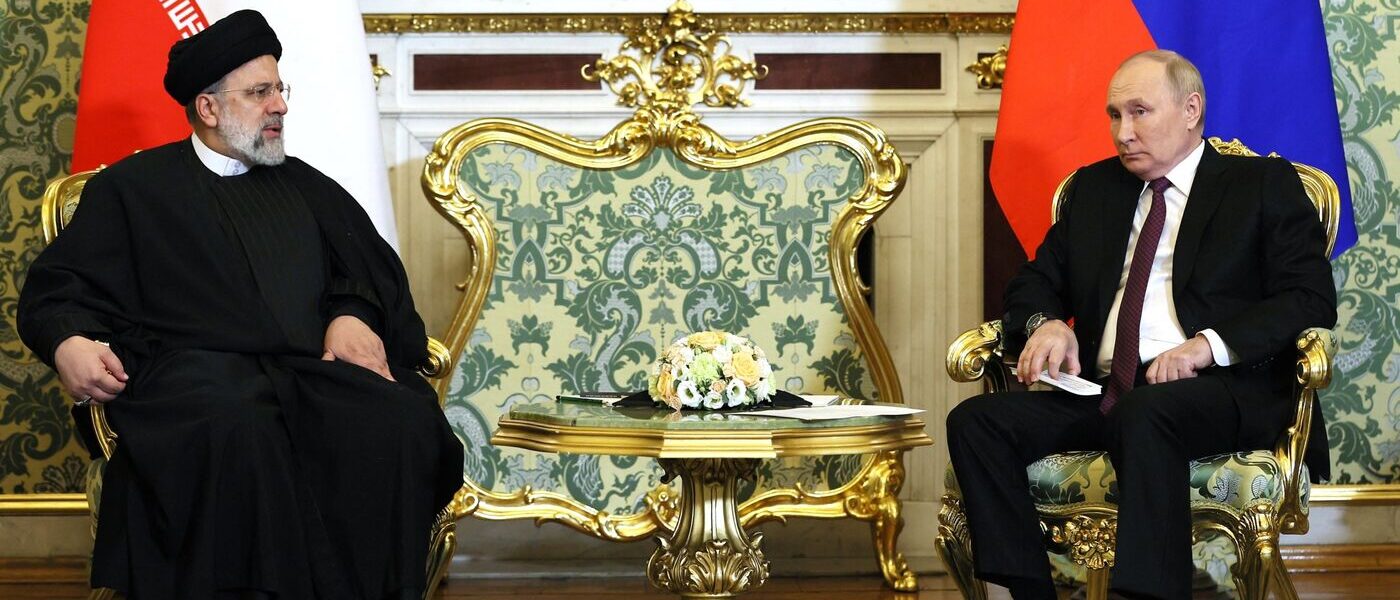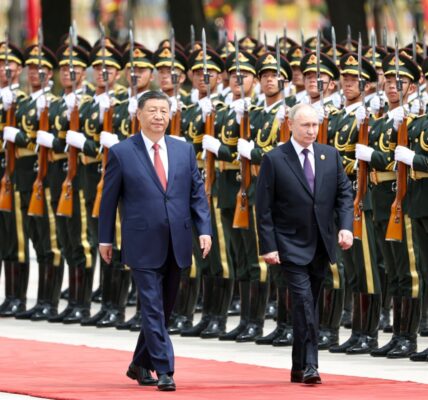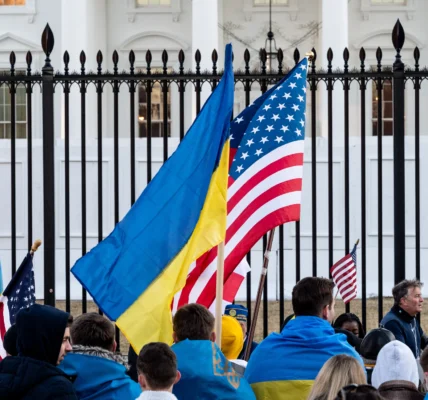Iran And Russia Strengthen Military and Economic Links with the Signing of a New Treaty
Iran and Russia will sign a new military treaty which will further strengthen the strategic alliance between the two countries.
President Vladimir Putin and his Iranian counterpart President Ebrahim Raisi will sign the agreement in the coming days which could see ballistic surface-to-surface missiles being delivered to the Russian armed forces.
Iran has also reportedly developed a new form of attack drone which intelligence sources believe will be sold to Russia for use in Iran.
The new weapon is called the Shahed-107, an “explosive and reconnaissance” unmanned aerial vehicle (UAV), possibly fitted with technology to seek out high-value battlefield targets such as British and American multiple-launch rocket systems used by Ukrainian forces.
The disclosures provide further evidence that the two authoritarian regimes, which were once enemies, are becoming increasingly close.
Both countries are united by mutual geopolitical, military and economic interests as well as a determination to oppose US influence, especially in the Middle East.
The two countries’ links were also further strengthened at the beginning of the month when Iran became a member of the BRICS group of nations.
As well as having economic links with the founding BRICS members – Brazil, Russia, India, China and South Africa – Iran will also be able to develop alliances with the new members which include Egypt, Ethiopia, Saudi Arabia and the United Arab Emirates.
The military axis between Moscow and Tehran began in the wake of the violent Syrian uprising against President Bashar Al-Assad in 2011.
Iranian proxy militias and Russian troops, including the notorious Wagner mercenary group, helped the Syrian Army defeat the various opposition forces, who were attempting to overthrow the Assad regime.
The relationship between Iran and Russia was further reinforced following Putin’s invasion of Ukraine in February 2022.
Iran began supplying Russia with thousands of drones, which have been predominantly used to target Ukrainian civilians.
In return, as well as large amounts of cash, Iran wants advanced Russian combat planes, air defence systems and other munitions.
Iran said in November that it had finalised arrangements for Russia to provide it with Su-35 fighter jets, Mi-28 attack helicopters and Yak-130 pilot training aircraft.
Russia has also provided cyber technology to Iran as well as Western weapons captured in Ukraine, including British and American anti-tank systems, earmarked for reverse engineering. Some western intelligence officials believe Russia may even be providing assistance to Tehran’s nuclear programme, prioritising a closer relationship with Iran above Moscow’s previous concerns over nuclear proliferation.
Deputy Director of the European Council on Foreign Relations’ MENA programme, Ellie Geranmayeh, underscored the weight of the burgeoning military relationship between Tehran and Moscow.
She said: “Tehran’s military contribution to Russia’s war effort has made an enormous difference to Russia’s ability to persevere in a difficult conflict.
“Iran, once a secondary player, is now one of Russia’s most significant collaborators in the war in Ukraine.
“These developments… also have the potential to provide Iran with a stronger military hand in the Middle East.’
Iran and Russia are determined to reduce their reliance on Western-led systems and are in the process of ramping up bilateral investment and establishing platforms designed to revitalise each other’s economies and boost trade.
More evidence of this lies in the construction of the International North-South Transport Corridor (INSTC) – an initiative created by Russia, Iran and India back in 2002 that aimed to develop infrastructure to facilitate trade and development between the three nations, as well as other countries like Azerbaijan.
The project had lagged behind schedule for decades and is still far from fully operational. But Russia last year made huge investments in the programme, particularly the construction of hundreds of miles of railway from northern Iran into Azerbaijan and Russia’s southern Dagestan province.
Senior Researcher at Russia’s Academy of Sciences Lana Ravandi Fadai said of the project: “The North-South ITC opens access to the seaports of Iran for Russia, as well as to the markets of Pakistan, India and Southeast Asia.
“These are the countries and regions that are rapidly growing economically, and interaction with those markets will help Russia find a pillar for further development of its economy in the situation of a de facto blockade by the West.”
Tehran’s ever-strengthening links with Moscow are vital to helping the Islamic Republic gain more prominence and sway in the international arena.
But the strategic relationship, which could very quickly become the most dominant in the Middle East also comes with significant risks for NATO and pro-western countries.

















































































































































































